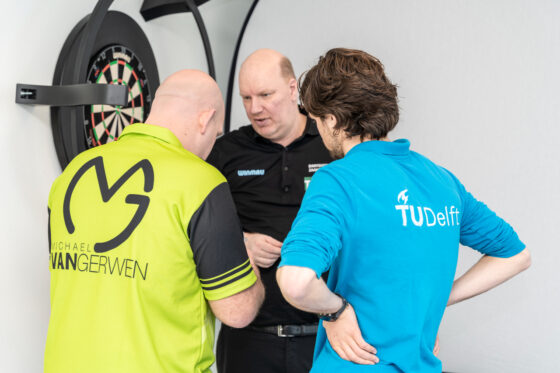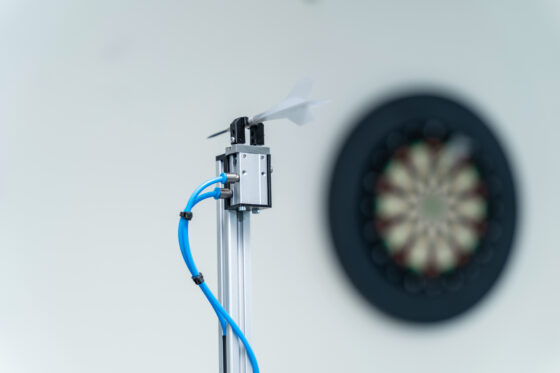Rocket scientists say aerodynamic ‘super dart’ is 50% more accurate


Scientists at Delft University of Technology have developed a new type of dart that they claim is almost 50% more accurate than standard arrows.
Researchers applied aerospace engineering techniques to make the darts less susceptible to tiny errors in throwing technique that can mean the difference between scoring a treble 20 and a 1.
Leading darts players including Raymond van Barneveld, Michael van Gerwen and Danny Noppert gave a mixed verdict when they were invited to try out the darts at a press conference in Delft this week.
Van Gerwen, the three-time world champion and current world number three, said the design was ‘nice and innovative, but it feels very strange and uncomfortable‘, while Van Barneveld, the five-times champion, declared himself a fan after throwing a 180 with the new darts.
‘I think this is the future of darts, but the arrow isn’t the only decisive factor in our sport,’ Van Barneveld said. ‘We’ll always have other factors to deal with, like a breeze on the podium, an opponent who takes a long time to take his darts off the board or people in the crowd shouting at you.’
Delft’s Sports Engineering Institute (SUI) turned its attention to darts after developing a new cycling outfit for Giro d’Italia winner Tom Dumoulin and a bobsled for Olympic skeleton bronze medallist Kimberley Bos.
The new style darts have longer, streamlined flights, indents on the shaft and a slimline, better weighted barrel that allows the darts to cluster more closely and reduces the risk of bounce-outs.
The engineers say the so-called ‘super darts’ conform to the professional body PDC’s specifications and have set up a company, Rocket Darts, to market their product. ‘It’s a fantastic combination of darts and rocket science,’ said Daan Bregman of the SUI.

Extensive tests with a robot using different throwing techniques showed that the darts landed nearly 50% more accurately, but Van Gerwen said human players would not necessarily get the same benefit. ‘Every darts player throws differently,’ he said.
Developer Michiel van Nesselrooij said the innovations focused on reducing the potential for the dart to wobble off course after leaving the thrower’s hand. ‘Until now very little attention has been paid in development to optimising the aeorodynamics,’ he said.
‘Players have the freedom to choose their own darts, so the performance of the dart can make a big difference. The sport has very few variables: the thrower, the arrow and the air. That means we can measure the impact of changes to the arrow very well.’
Thank you for donating to DutchNews.nl.
We could not provide the Dutch News service, and keep it free of charge, without the generous support of our readers. Your donations allow us to report on issues you tell us matter, and provide you with a summary of the most important Dutch news each day.
Make a donation